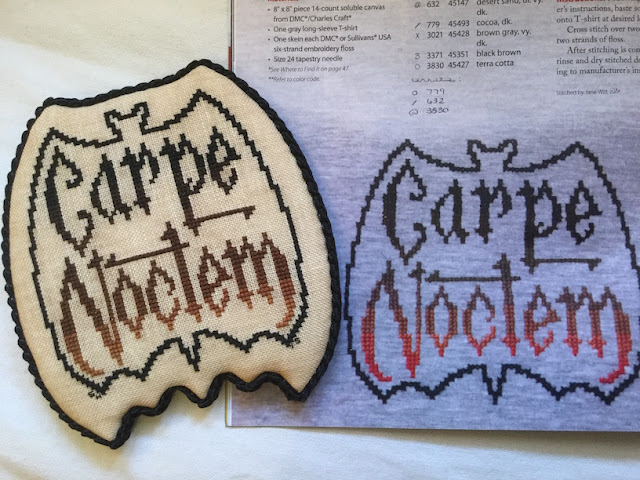YOU
NEED
A
COLOR
CARD
Yes, you do. If you stitch with DMC and you don't have a color card, your stitching life is not as easy as it could be and we must fix that. Trying to do a color conversion without a color card is like trying to find your way to somewhere you've never been without a map. It can be done, but it's a lot harder and takes a lot longer. Even if you're not a color changer, there will always be times when you need a quick substitute for a color you don't have on hand. And I suspect that once you have a color card, you may find yourself saying, "Hmmm. That color just doesn't work for me. I wonder..." And then we've got you! (DMC color card is available here. Make sure to get the one with the actual thread samples.)
Speaking of maps, this post from a couple of years ago explains my approach to color conversions and my concept of making a color map. I won't repeat here everything I said there, but I do want to expand on something I mentioned in that post: the color wheel.
These little color wheels can be found in the art department of any craft store. They're especially handy for people who don't feel like they're "good with color." When paired with a color card, they can make exploring color combinations much easier. Here's a short video that explains how this type of color wheel is used to find two, three, and four-color combinations.
Here's an example of using the color wheel with the color card to find a two-color combination. I started with DMC 340, a bright periwinkle blue, as my primary color. It closely matches the 3 value in the blue section. For a two-color combination, I match the black arrows. The other black arrow (at the bottom) points me to an orange section.
And here's the two-color combination.
For a three-color combination, I pointed the red triangle at my chosen 3 value blue, and then followed the other two red triangles to the two other 3 value colors.
Doing the same using the orange triangle gives me this:
Using the green rectangle for a four-color combination gives me this:
And using the purple square gives me this:
Now, you may look at these color combinations and say, "Nope. Don't like any of those." There are a couple of important things to remember when using tools like these. First, you're seeing all the colors in equal proportions, which is rarely how they would be used in a design. Normally, one color would dominate (perhaps the blue), and the other colors would be used to accent it. Second, you're seeing all the colors in the same value. In my example, they're all pretty bright, but if I had chosen a 1 value, they would all be very pale. Here is where a color card and color wheel really help. These tools make it much easier to "calm down" a color, or to intensify one. Using them together is great because it gets you into the ballpark of what combinations work (whether you like them or not!) and gives you a jumping off point for making adjustments to suit your preferences: keep the blue and pink, tone down the green, and use the yellow sparingly, etc.
Another fun way to play with color is by using Google image search. Granted, I'm a color nut, but when I say fun, I mean I could waste (waste?) an hour just plugging in different color combinations and being amazed at what pops up. It's a super easy way to explore color. Just remember, when you're putting in colors, the names for the colors makes a BIG difference. For example, here's what I get when I put in "green and purple."
Here's "sage green and lavender."
And here's "mint and lilac."
All of those are essentially green and purple, but you can see what a huge difference the search terms make. How about a few more? Because this is fun.
Blue and orange:
Or the fluffier periwinkle and peach:
And a few more of my favorites. Pink and grey.
Copper and teal:
Red and turquoise:
Taupe and aqua:
Okay, I'll stop now. But isn't that cool? You can just play and play and play. Of course, there are tons of resources online if you really want to get heavy into color theory and such. I hope this series of posts has been helpful in some way, and at the very least has been an encouragement to take a moment and appreciate how wonderful color is.
Happy Stitching!

























































